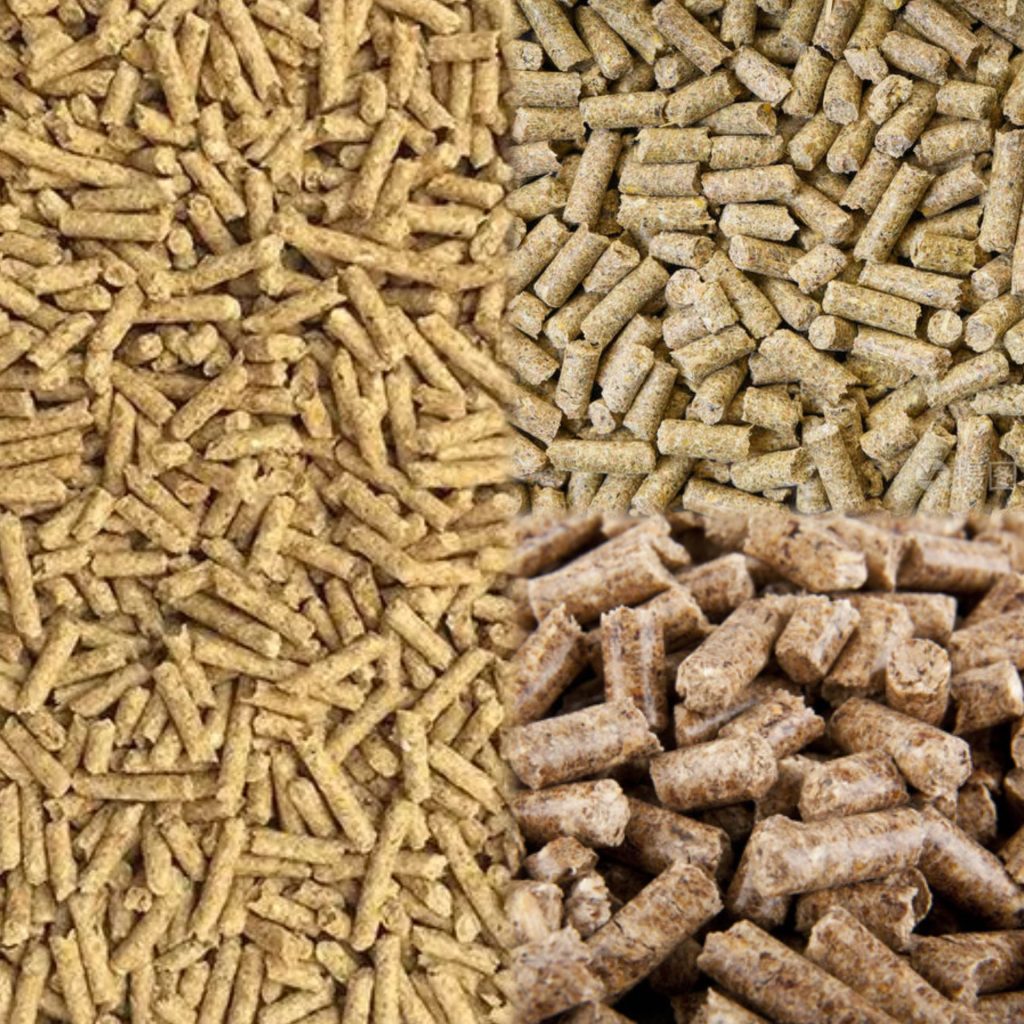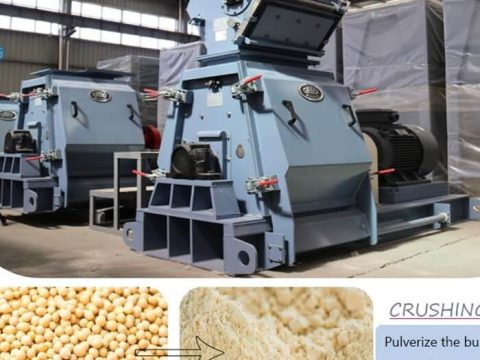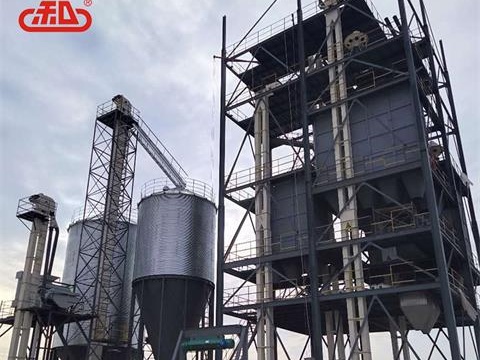There are many small impurities in feed raw materials, which not only carry a large number of pathogenic microorganisms, but also endanger the health of livestock and poultry at all times, and even cause the raw materials to deteriorate. When impurities are contained, the nutritional content of the feed will be significantly reduced, resulting in the quality of the cost feed being unable to remain relatively stable and the shelf life being greatly shortened. During the feed production and processing process, the quality of feed raw materials must be strictly controlled, and facilities such as oscillating screens, blowers, and grading screens are used to remove impurities in the feed raw materials to ensure the nutritional quality of the feed and increase the stability of the feed, which provides benefits to the livestock and poultry breeding industry. lay a solid foundation for its development.
1. Hazards of impurities in feed raw materials
Feed raw materials need to be properly handled during harvesting, acceptance, air drying, production and storage to prevent them from being mixed with external impurities. Foreign objects such as scraps, pieces of paper, and iron wire that are common in the natural environment are easily mixed in the feed ingredients. If they are not cleaned thoroughly, the nutritional value of the feed will be reduced. The most important thing is that the production equipment will be damaged or blocked during the processing. phenomenon, thereby seriously affecting the shape or quality of the feed. For example, when large pieces of metal are mixed into feed raw materials, it can lead to poor transportation of the raw materials during processing, blockage of the material path, etc., leading to idling of the transport machinery, damage to the crusher screen and the ring die of the granulator, or even breakdown. occurrence, which not only reduces production efficiency but also increases production costs. Removing impurities from feed raw materials can not only ensure the quality of feed products, but also reduce equipment damage and personnel safety, thereby improving feed processing speed and production efficiency.

2 Feed raw material impurity removal process
In actual production, the impurity removal process of feed raw materials in feed mills is roughly divided into impurity removal before entering the warehouse and impurity removal after entering the warehouse. These two impurity removal processes are introduced in detail below.
2.1 Clean up the debris before entering the warehouse
When purchasing raw materials during the day, the impurity content of the purchased raw materials is very small and relatively clean, which is conducive to raw material storage and material mobility. At this time, it is more appropriate to use lifting equipment and cleaning equipment to clean the impurities before entering the warehouse. It is also very convenient when leaving the warehouse. In order to facilitate crushing or granulation, the raw materials in the main material bin and the auxiliary material bin also need to be cleaned.
2.2 Clean up after entering the warehouse
The main materials enter through the unloading pit, from the elevator to the conveyor, and finally the raw materials enter the silo. When processing finished feed, the raw materials are transported from the warehouse conveyor to the scraper, and then pass through an oscillating screen or magnetic separator for post-warehouse cleaning. Since this miscellaneous process is carried out after the raw materials are put into the warehouse, the equipment and facilities used need to be organically integrated with the equipment in the main workshop, so as to improve the efficiency of miscellaneous cleaning and feed processing.
3 Measures to ensure the quality of raw materials and impurities
3.1 Proper use of screens
Screening is the first choice to remove impurities from raw materials, and it is also one of the most important steps. In daily production, screen equipment is often ignored because it is too simple. The design of the grid screen must first consider the distance between the screen gaps. The size of the screen gaps should be determined with reference to the feed materials. For corn and powdered auxiliary materials, the required sieve gap should be less than 30 mm; for oil and meal raw materials, the sieve gap needs to be maintained at 30 to 50 mm to ensure the quality of the primary screening and improve the efficiency of the primary screening.
3.2 Reasonably arrange horizontal conveying machinery
Because horizontal conveying equipment has low cost and high conveying efficiency, it is very commonly used in feed processing technology. If the horizontal conveying machinery is used in the wrong position, it will malfunction more frequently. In the production of feed mills, if the materials only pass through the preliminary screening of the grid screen, there will still be some impurities such as hemp rope ends and plastic fragments, which will cause damage such as entanglement or blockage to the horizontal conveying equipment, resulting in motor burnout or reduced production efficiency.
When designing the feed raw material processing technology, the usage characteristics of the horizontal conveying machinery should be considered, and try not to place the horizontal conveying machinery in front of the primary cleaning and magnetic separation facilities. The feed raw materials from the lower hopper directly reach the elevator through the flow pipe, which can avoid or reduce the potential harm of impurities to the conveyor as much as possible.
3.3 Reasonable selection of primary cleaning cylinder
The primary cleaning tube is the main facility and equipment in the process of removing impurities from feed raw materials. It removes impurities such as rope ends, stones, soil blocks, and plastic pieces from feed raw materials. The cleaning results of different specifications of primary cleaning cylinders for feed raw materials are very different. The feed mill should select the appropriate aperture primary cleaning cylinder according to the physical properties and particle size of the cleaned feed raw materials. Choose a primary cleaning tube that can adjust the dust suction volume so that the air suction volume can be controlled by adjusting the valve above the air feeding port. Choose a primary cleaning cylinder whose production capacity is slightly larger than the actual production volume, that is, a large horse-drawn cart instead of a small horse-drawn cart. This design can carry out feed production more smoothly and avoid low production efficiency.
3.4 Reasonable selection of magnetic separation equipment
There are two types of magnetic separation equipment commonly used in feed mills: permanent magnet cylinder magnetic separator and permanent magnet drum magnetic separator. The former is small in size, does not need to occupy a large area of ground and space, has no power consumption, and has a better magnetizing effect, but It can only adsorb smaller powders and light materials, and the adsorbed metals need to be manually removed regularly. The permanent magnet drum magnetic separator is larger in size, takes up more ground and space, and is more expensive. It can absorb larger cakes, bran or bran meal that is easy to agglomerate. It consumes power and can be automatically removed in time. To absorb metal debris, it is more suitable to install it at a higher position in the feed processing line. It is common for most feed mills to install cost-effective permanent magnet drum magnetic separators.
3.5 Reasonably arrange the magnetic separator
In order to better remove raw material impurities, a magnetic separator needs to be properly installed. It is generally installed in front of the crusher and after the initial cleaning and screening process. It can completely clean out metal impurities and prevent metal debris from damaging the screen, hammer and other crushers. Damage to components; if pellet feed is produced, install a magnetic separator on each feed raw material bin to effectively absorb metal impurities to avoid damage to the pellet machine, pressure rollers and ring molds. For feed raw material processing plants, it is recommended to install a magnetic separator on the packaging scale, which can effectively absorb metal debris in the feed raw materials, further improve and ensure the quality of the feed raw materials, and improve the quality and efficiency of the feed factory. Lay a solid foundation.
4 Factors affecting magnetic separation effect
There are many factors that affect the magnetic separation effect of the magnetic separator. When using a magnetic separator, feed processing plants should pay special attention to the factors that affect the magnetic separation effect of the magnetic separator in order to improve the magnetic separation effect and avoid losses caused by feed production facilities and equipment. Improve production efficiency; reduce maintenance costs due to unsatisfactory magnetic separation results, thereby increasing the economic and social benefits of the feed mill. First of all, pay attention to the thickness of the feed raw material layer. Remember that the feed raw materials should be uniform when feeding, and the material layer should not be too thick to avoid affecting the magnetic separation effect. Secondly, the thickness of the material layer needs to be kept at a reasonable range of 10 to 15 mm. The feed flow rate cannot be too fast, otherwise it will affect the magnetic separation effect. If the flow rate is too slow, it will affect the production efficiency. The ideal material flow rate is 0.15 to 0.2 m/s. Finally, if the magnetic poles of the permanent magnet drum magnetic separator indicate that there are more metal debris adsorbed, which affects the magnetic separation effect, the metal debris adsorbed by the magnetic pole poles should be removed regularly to increase the adsorption capacity of the permanent magnet drum magnetic separator and improve the magnetic separation effect.
In the process of feed production and processing, in order to ensure the quality of the feed and extend the shelf life, removing impurities in the feed raw materials is an important process that cannot be ignored. Feed processing enterprises should attach great importance to it and strictly implement effective removal processes to ensure that the feed processing The company's production efficiency and product quality have laid a good foundation for providing high-quality and low-cost feed for the livestock and poultry breeding industry.

After purchasing a good feed grinder, if it is not used correctly, it will not only shorten the service life of the feed grinder, but also affect the work efficiency, resulting in half the result with twice the effort.

14 containers, for a period of one week, double 520 pellet Feed Production Line, loading and shipping in the factory area.